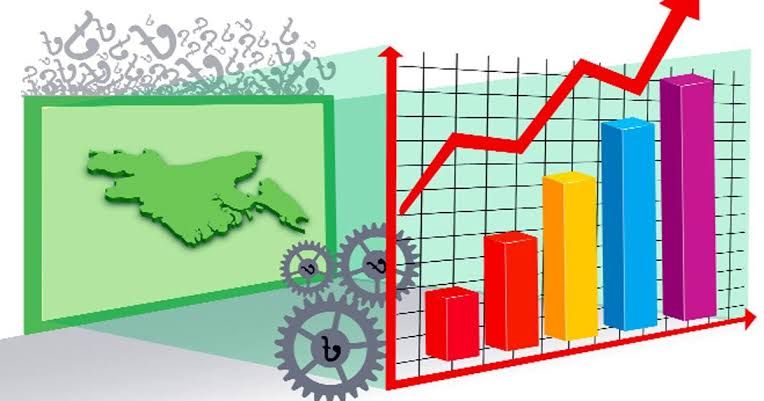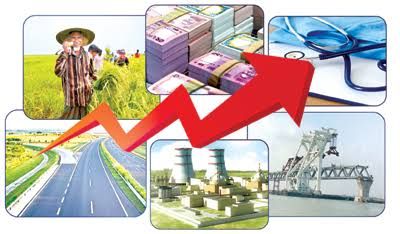
Bismillaher Rahmanir Rahim.
Assalamu Alaikum Wa Rahmatullahi Wa Barakatuhu
Dear Companions Today I want to share with you some words about the evils of killing foetuses.Welcom to this post and congratulations to all.
During the interwar period (1918–1939), countries around the world faced significant challenges in developing their economies. The interwar period was marked by political upheavals, economic turbulence, and shifting global dynamics. Governments' efforts to develop their economies during this time were shaped by the aftermath of World War I, the Great Depression, and various regional and global factors. This essay will discuss the efforts and abilities of governments during the interwar period to develop their economies, with a particular focus on the differing approaches and outcomes observed in various countries.

source
Economic Conditions after World War I
The end of World War I in 1918 left many countries, particularly in Europe, with devastated economies. The war had caused widespread destruction, massive debt, inflation, and the redirection of resources from productive investments to military expenditures. Governments across the world had to focus on rebuilding their economies, stabilizing their currencies, and dealing with the social and political changes brought by the conflict. Countries like Britain, France, and Germany were heavily affected, with significant losses in labor, infrastructure, and financial stability. In contrast, the United States emerged from the war with a stronger economy, as it had suffered less direct damage and had become a major lender to other nations.
Government Efforts to Stabilize and Develop Economies
Britain and France
Britain and France, two of the major powers in Europe, faced numerous economic challenges during the interwar period. In the aftermath of the war, both nations faced substantial debts, high unemployment rates, and a decline in industrial production. To stabilize their economies, the governments adopted policies focused on monetary stability, debt repayment, and industrial recovery. The British government, for example, returned to the gold standard in 1925, hoping that it would stabilize the economy and restore London’s position as the world’s financial center. However, this decision proved to be detrimental as it overvalued the pound, making British exports more expensive and less competitive.

source
In France, the government faced similar difficulties in stabilizing the economy. The country had experienced significant infrastructure damage during the war, and its economy was burdened by the costs of reconstruction and war reparations. Despite these challenges, France managed to stabilize its currency in the late 1920s and enjoyed a period of relative economic growth. The French government focused on rebuilding its industrial base, modernizing infrastructure, and boosting productivity in agriculture and manufacturing.
The Weimar Republic in Germany
Germany's economic situation was even more dire. The Treaty of Versailles imposed heavy reparations on the country, leading to severe economic instability and hyperinflation in the early 1920s. The Weimar Republic faced enormous challenges in managing this economic crisis. In response, the German government implemented several economic reforms, including the introduction of a new currency (the Rentenmark) in 1923, which helped stabilize the economy. The Dawes Plan of 1924 also played a crucial role in restructuring Germany's reparations payments and securing foreign loans, mainly from the United States, to help rebuild the economy.
The late 1920s saw a period of relative stability and economic growth in Germany, known as the "Golden Twenties." During this time, the government invested in infrastructure, housing, and industrial development. However, this recovery was heavily dependent on foreign loans and investments, making the German economy vulnerable to global economic shifts.

source
The United States and the Great Depression
The United States experienced a different economic trajectory during the interwar period. Initially, the U.S. economy boomed during the 1920s, a period often referred to as the "Roaring Twenties." This growth was driven by technological advancements, increased consumer spending, and a strong stock market. However, the speculative bubble in the stock market eventually burst, leading to the Wall Street Crash of 1929 and the onset of the Great Depression.
In response to the economic crisis, the U.S. government under President Herbert Hoover initially adopted a laissez-faire approach, believing that the economy would self-correct. However, as the depression deepened, the limitations of this approach became apparent. It wasn't until Franklin D. Roosevelt took office in 1933 that the government adopted more active interventionist policies through the New Deal. The New Deal programs aimed to provide relief for the unemployed, stimulate economic recovery, and implement financial reforms to prevent future crises. Major initiatives included public works projects, financial regulations, and social welfare programs. These efforts helped to stabilize the U.S. economy, although full economic recovery was not achieved until the onset of World War II.
The Soviet Union: State-Controlled Economic Development
In stark contrast to the capitalist economies of the West, the Soviet Union pursued a centrally planned economy during the interwar period. Under the leadership of Joseph Stalin, the Soviet government implemented a series of Five-Year Plans aimed at transforming the largely agrarian economy into an industrial powerhouse. These plans focused on rapid industrialization, collectivization of agriculture, and state control over all aspects of economic activity.

source
The Soviet government's ability to mobilize resources for industrial growth was remarkable, and by the late 1930s, the USSR had significantly increased its industrial output. However, these achievements came at a great human and social cost, including forced labor, famine, and widespread repression. The collectivization policies led to severe disruptions in agricultural production, causing widespread famine in the early 1930s, particularly in Ukraine.
The Impact of Global Trade and the Rise of Protectionism
One of the significant challenges that governments faced during the interwar period was the decline in global trade. The Great Depression led to a severe contraction in international trade, as countries adopted protectionist policies to shield their domestic industries from foreign competition. The United States, for example, passed the Smoot-Hawley Tariff Act in 1930, which imposed high tariffs on imported goods. This policy triggered retaliatory tariffs from other countries, further reducing global trade and deepening the economic downturn.
Many countries, in response to declining trade opportunities, turned to economic nationalism and self-sufficiency. This shift away from free trade further hindered economic development, as nations became more isolated and less integrated into the global economy. Despite these challenges, some nations, such as Japan, successfully industrialized by focusing on state-led development and expanding their influence in Asia.

source
Limitations and Failures of Government Efforts
Despite the various efforts by governments to develop their economies, many of these strategies were met with limited success or outright failure. The reliance on foreign loans, especially in countries like Germany and many Eastern European nations, created vulnerabilities that were exposed during the Great Depression. Additionally, the emphasis on protectionism and economic nationalism stifled global trade, which was essential for economic growth.
In democratic countries, political instability and the rise of extremist ideologies also hampered economic development. For instance, in Germany, the economic turmoil of the 1920s and early 1930s contributed to the rise of the Nazi Party, which capitalized on the population's discontent with the government's handling of the economy. Similarly, in other parts of Europe, economic hardship led to the rise of authoritarian regimes that promised stability and economic revival.
The interwar period was a time of economic experimentation and challenges for governments worldwide. While some countries managed to stabilize their economies and achieve growth, many others struggled with the aftermath of World War I, the Great Depression, and the rise of protectionism. The varying approaches, from state-led development in the Soviet Union to the New Deal reforms in the United States, highlight the diversity of strategies employed to address economic issues. However, despite their efforts, the ability of governments to fully develop their economies during this period was often constrained by both internal and external factors, leading to mixed outcomes that set the stage for the global conflicts and transformations that followed.